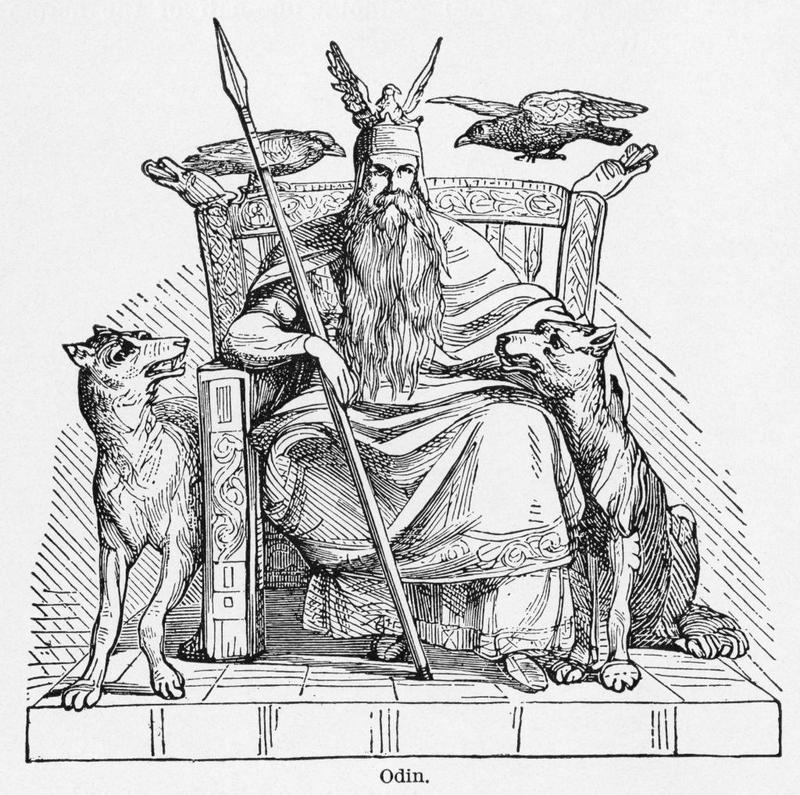The History Of Why We Leave Milk And Cookies Out For Santa Claus Every Year
By | December 22, 2020

Christmas has evolved to include numerous small traditions, like placing the star atop the Christmas tree, opening advent calendars, and/or leaving a plate of cookies for Santa Claus. But why, exactly, did we decide a mythical being capable of bending space and time needed snack breaks at every pit stop? And why those snacks? No one knows for sure why we leave cookies out for Santa, but we do have some clues to the origins of this holiday tradition.
Odin's Horse
Odin was a chief figure in Norse mythology and one of the bases of the Santa Claus myth, partially thanks to his eight-legged horse, Sleipner, who may have inspired Santa's eight reindeer. During Yuletide, young children often left small treats out for Sleipner to entice him into their homes, hoping Odin would reward them for their generosity.

Offerings For Saint Nicholas
Another figure responsible for our modern understanding of jolly old Saint Nick was, well, jolly old Saint Nick. The real saint was a Greek orphan who decided to use his considerable inheritance to help the needy all over the world instead of buying a yacht or whatever rich people did for fun in the third century. He's celebrated on the day of his death with the feast of Saint Nicholas, where children traditionally leave food items like small cakes and a beverage as an offering to the guest of honor at the end of the feast. During the night, the goodies inevitably disappear, replaced by gifts of thanks for the children "from" Saint Nicholas.

Christmas Tree Cookies
The original Christmas tree looked pretty different from the colorful display of electric lights and Snoopy ornaments that we erect every year today. The Paradise Tree, a prop used in religious plays in medieval Germany to represent the Garden of Eden, was decorated with cookies, cakes, wafers, and apples before it was marched through the streets to announce to the townsfolk that they'd better get in their seats because the play was about to start. When traditions merged and the Paradise Tree transformed into the modern Christmas tree, many Germans continued to adorn their trees with cookies and told their children that the goodies were a gift for Santa Claus.

Gingerbread Men
In the 13th-century Netherlands, bakers began making all kinds of stuff out of gingerbread, from simple cookies to ornate model houses. Soon after they brought their traditions to the rest of Europe, gingerbread houses became a fixture of Saint Nicholas Day celebrations. After adorning their houses with candies, fruit, and any other chunks of sweetness they could get their hands on, children left them out for Nick and his crew, but they often found the houses largely untouched in the morning. Perhaps, they thought, Saint Nicholas (or whoever was really in charge of clearing away the goods) found the gingerbread houses too pretty or unwieldy to eat, so they decided to leave gingerbread cookies instead, often shaped in his likeness. The practice is not only part of the reason we leave cookies for Santa but also the origin of the gingerbread man.

Victorian Hospitality
Prior to the Victorian era, the whole idea of childhood wasn't really a thing in the Western world. Children were expected to behave like tiny adults and take on the accompanying responsibilities, but during that time of so much cultural upheaval, customs geared specifically toward youngsters began to evolve. Families also began to focus on the etiquette of hospitality—that is, the popular consensus of what makes a good host or hostess. When visitors came to stay with Victorian families, it was customary for them to find a tray of cookies and a small pitcher of milk in their room upon arrival, ostensibly to take the edge off their hunger after a long day's travel when dinner was achingly far away. The children, of course, took notice of this. If cookies and milk were left for all their guests, they asked, shouldn't they extend the same courtesy to Santa Claus when he stops by on Christmas Eve?

Depression Cookies (Not That Kind)
During the Great Depression of the 1930s, most American families struggled to make ends meet, and providing a happy Christmas for their children was often challenging. Fortunately, the Bible covers this, so parents encouraged their children to leave a gift for Santa Claus in the form of fresh-baked cookies and a glass of milk (both reasonably cheap for cash-strapped families) to reinforce the biblical teachings that it is better to give than to receive and to be grateful for what they have. In the morning, if they were lucky enough to find a few presents under their Christmas tree, they knew not to throw a fit that it wasn't 10.

Cookies For Santa, A Global Phenomenon
The practice of leaving cookies and milk for Santa is obviously not limited to the United States, but different cultures have their own takes on the tradition. In some countries, it would be unthinkable to neglect Santa's reindeer, so carrots, apples, sugar cubes, or hay accompanies the cookies for the big man's furry friends. Thankfully for his blood sugar, it's not always cookies he finds, either. In Sweden, he may find rice porridge, and in Britain, a tray of mince pies might greet his arrival. It's a safe bet, however, that Santa's favorite places to stop are Ireland and France, where he can look forward to a pint of Guinness and a glass of wine, respectively.

